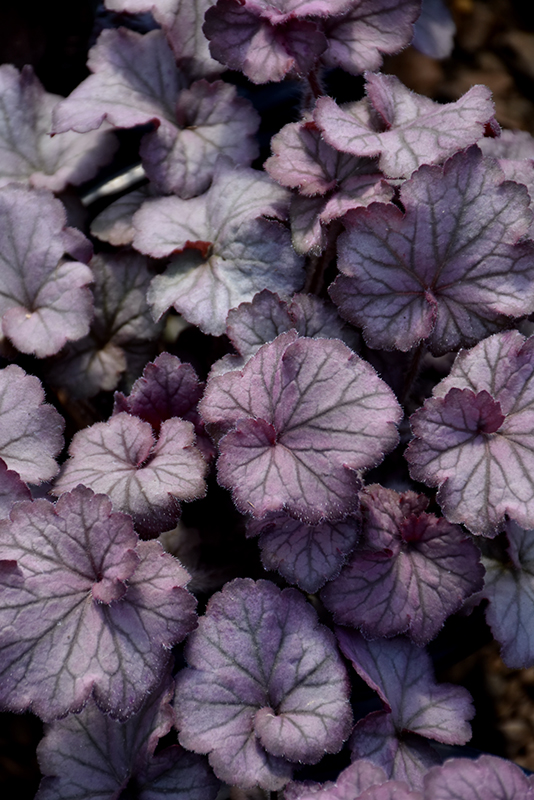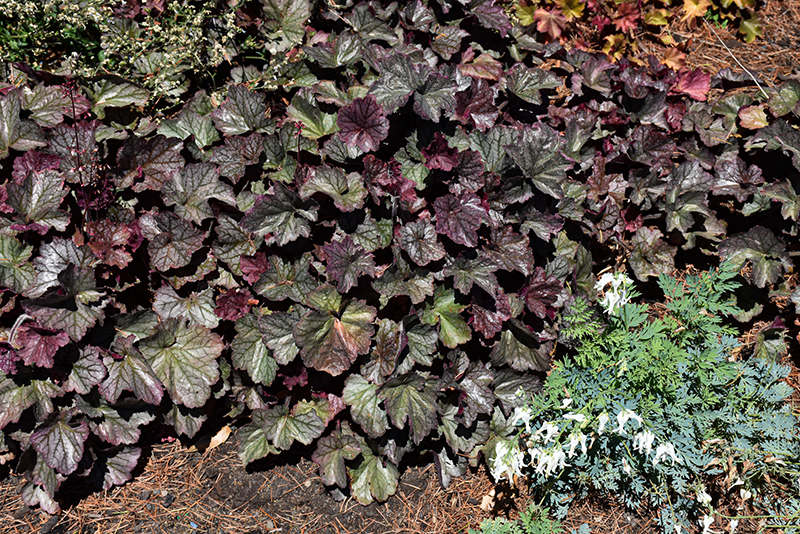Know Before You Go!
Get notified before our plants arrive in stores near you.
Plant Care Library

Northern Exposure™ Silver Coral Bells foliage
Northern Exposure™ Silver Coral Bells foliage
(Photo courtesy of NetPS Plant Finder)

Northern Exposure™ Silver Coral Bells
Northern Exposure™ Silver Coral Bells
(Photo courtesy of NetPS Plant Finder)
Plant Height: 13 inches
Flower Height: 24 inches
Spacing: 15 inches
Sunlight:
![]()
![]()
![]()
Hardiness Zone: 4a
Other Names: Coralbells, Alumroot
Brand: Terra Nova Nurseries
Description:
This showy garden plant produces silver foliage with deep green veins and burgundy reverses, on a dense, medium size mound; very hardy, with great rust resistance and longevity; excellent for borders, mixed beds, woodland gardens, or as an accent
Ornamental Features
Northern Exposure™ Silver Coral Bells features dainty spikes of pink bell-shaped flowers rising above the foliage from mid spring to mid summer. Its attractive crinkled round leaves remain silver in color with distinctive dark green veins and tinges of burgundy throughout the year.
Landscape Attributes
Northern Exposure™ Silver Coral Bells is a dense herbaceous evergreen perennial with tall flower stalks held atop a low mound of foliage. Its relatively fine texture sets it apart from other garden plants with less refined foliage.
This is a relatively low maintenance plant, and should be cut back in late fall in preparation for winter. It is a good choice for attracting butterflies to your yard. It has no significant negative characteristics.
Northern Exposure™ Silver Coral Bells is recommended for the following landscape applications;
- Mass Planting
- Rock/Alpine Gardens
- Border Edging
- General Garden Use
- Groundcover
- Container Planting
Planting & Growing
Northern Exposure™ Silver Coral Bells will grow to be about 13 inches tall at maturity extending to 24 inches tall with the flowers, with a spread of 16 inches. When grown in masses or used as a bedding plant, individual plants should be spaced approximately 15 inches apart. Its foliage tends to remain dense right to the ground, not requiring facer plants in front. It grows at a medium rate, and under ideal conditions can be expected to live for approximately 10 years. As an evegreen perennial, this plant will typically keep its form and foliage year-round.
This plant performs well in both full sun and full shade. However, you may want to keep it away from hot, dry locations that receive direct afternoon sun or which get reflected sunlight, such as against the south side of a white wall. It prefers to grow in average to moist conditions, and shouldn't be allowed to dry out. It is not particular as to soil type or pH. It is somewhat tolerant of urban pollution. Consider applying a thick mulch around the root zone in winter to protect it in exposed locations or colder microclimates. This particular variety is an interspecific hybrid. It can be propagated by division; however, as a cultivated variety, be aware that it may be subject to certain restrictions or prohibitions on propagation.
Northern Exposure™ Silver Coral Bells is a fine choice for the garden, but it is also a good selection for planting in outdoor pots and containers. With its upright habit of growth, it is best suited for use as a 'thriller' in the 'spiller-thriller-filler' container combination; plant it near the center of the pot, surrounded by smaller plants and those that spill over the edges. Note that when growing plants in outdoor containers and baskets, they may require more frequent waterings than they would in the yard or garden.
A NetPS Plant Finder tool
